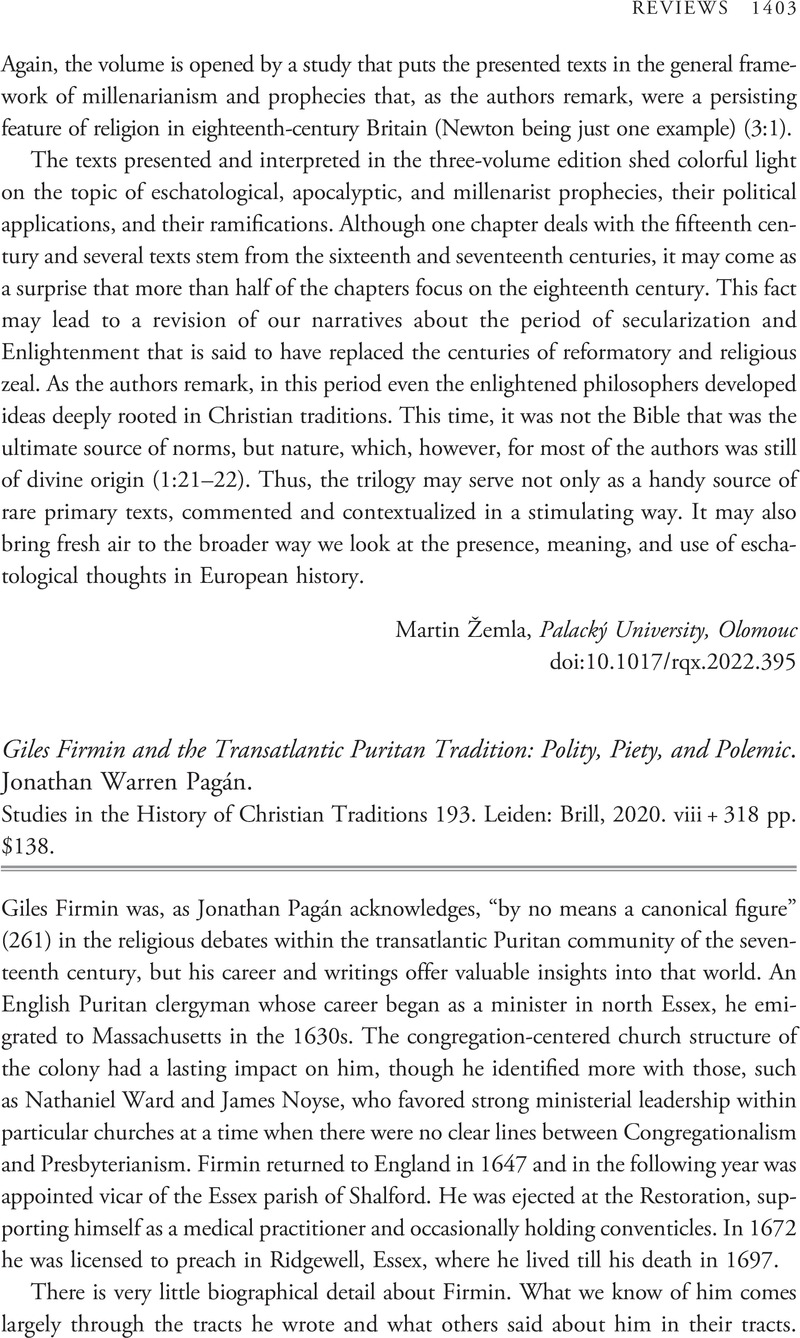No CrossRef data available.
Article contents
Giles Firmin and the Transatlantic Puritan Tradition: Polity, Piety, and Polemic. Jonathan Warren Pagán. Studies in the History of Christian Traditions 193. Leiden: Brill, 2020. viii + 318 pp. $138.
Review products
Giles Firmin and the Transatlantic Puritan Tradition: Polity, Piety, and Polemic. Jonathan Warren Pagán. Studies in the History of Christian Traditions 193. Leiden: Brill, 2020. viii + 318 pp. $138.
Published online by Cambridge University Press: 09 January 2023
Abstract
An abstract is not available for this content so a preview has been provided. Please use the Get access link above for information on how to access this content.

- Type
- Review
- Information
- Copyright
- Copyright © The Author(s), 2022. Published by the Renaissance Society of America



